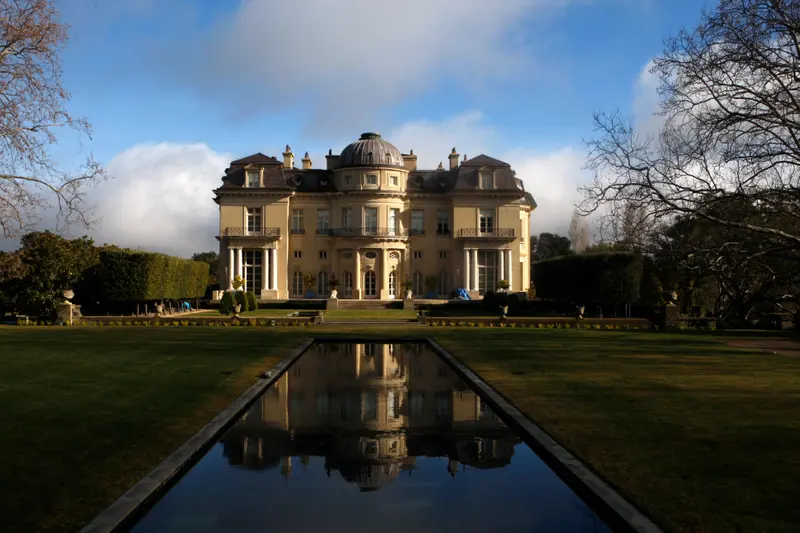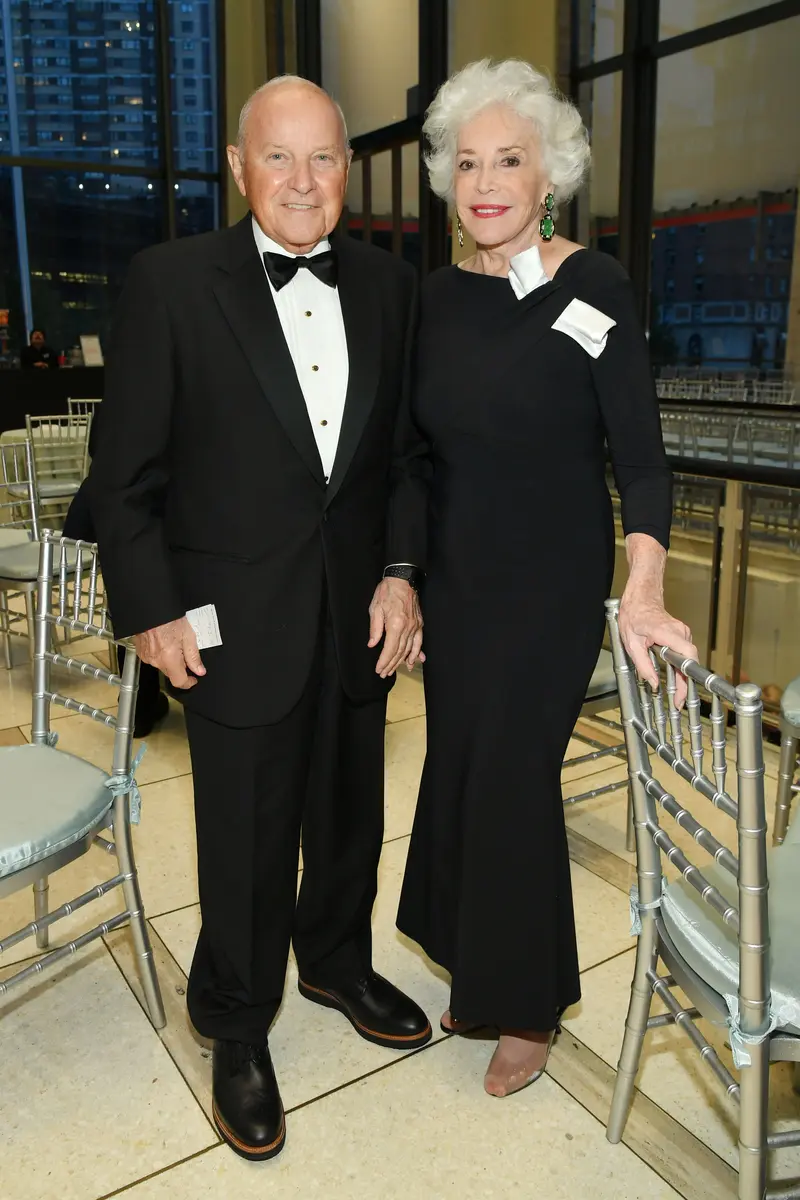
How the Ultrawealthy Use Private Foundations to Bank Millions in Tax Deductions While Giving the Public Little in Return
It’s a simple bargain: The rich get huge tax breaks by donating art, property and company shares to benefit the public. But some donors collect millions while offering little or no public access.
How the Ultrawealthy Use Private Foundations to Bank Millions in Tax Deductions While Giving the Public Little in Return
It’s a simple bargain: The rich get huge tax breaks by donating art, property and company shares to benefit the public. But some donors collect millions while offering little or no public access.
by Jeff ErnsthausenJuly 26, 5 a.m. EDTProPublica is a nonprofit newsroom that investigates abuses of power. Sign up to receive our biggest stories as soon as they’re published.
Once a week, a little past noon on Wednesdays, a line of cars forms outside the wrought-iron gates of the Carolands mansion, 20 miles south of downtown San Francisco. From the entrance, you can see the southeast facade of the 98-room Beaux Arts chateau, which was built a century ago by an heiress to the Pullman railroad-car fortune. Not visible from that vantage point is the stately reflecting pool, or the gardens, whose original designer took inspiration from Versailles.
I was sitting just outside this splendor, idling in my rented Toyota Corolla, on a clear day last winter. Like the other people in the line of cars, I was about to enjoy a rare treat. Carolands is an architectural landmark, but it’s open only two hours a week. Would-be visitors apply a month in advance, hoping to win a lottery for tickets. Like most lotteries, this one has long odds. I had applied unsuccessfully for the three tours scheduled for February. Finally, I resorted to my journalist’s privilege: I emailed and called the director of the foundation that owns the estate, explaining that I was a reporter planning to be in the area for a few days. Could she help? Eventually, she called back and offered me a place on a tour.
It wasn’t supposed to be this difficult. When billionaire Charles Johnson sought a tax break in 2013 for donating his mansion to his private foundation, the organization assured the Internal Revenue Service and state officials that the public would be welcome. “The Foundation will fulfill its charitable and educational purpose by opening the Carolands Estate to the public,” it stated in its application for tax-exempt status, which included a pamphlet for a self-guided tour. The foundation later told a California tax regulator that the estate was open to the public every weekday from 9-5.

There was a lot of money at stake. Johnson, a Republican megadonor and part owner of the San Francisco Giants, had gotten an appraisal valuing the property at $130 million, a price higher than any publicly reported home sale in the U.S. up to that time, and five times the $26 million he and his wife, Ann, had reportedly paid 14 years earlier to buy and restore what then was a dilapidated property.
The plan worked. The IRS granted the foundation tax-exempt status. That allowed the Johnsons to collect more than $38 million in tax savings from the estate over five years, confidential tax records show.
But the Johnsons never opened Carolands to the public for 40 hours a week. Instead, the foundation bestows tickets on a few dozen lottery winners, who receive two-hour tours, led by docents, most Wednesdays at 1 p.m. Self-guided tours, like the ones described in the attachments to Johnson’s IRS application, are not offered. “It sounds like a vanity project with little to no public benefit,” said Roger Colinvaux, a professor of law at The Catholic University of America who specializes in the tax law of nonprofit organizations. (Experts also questioned Carolands’ $130 million valuation — which turbocharged the Johnsons’ deduction — while acknowledging that as long as it’s based on a qualified appraisal, which it was, the IRS is unlikely to challenge the size of the deduction.)

For the ultrawealthy, donating valuables like artwork, real estate and stocks to their own charitable foundation is an alluring way to cut their tax bills. In exchange for generous tax breaks, they are supposed to use the assets to serve the public: Art might be put on display where people can see it, or stock sold to fund programs to fight child poverty. Across the U.S., such foundations hold over $1 trillion in assets.
But a ProPublica investigation reveals that some foundation donors have obtained millions of dollars in tax deductions without holding up their end of the bargain, and sometimes they personally benefit from donations that are supposed to be a boon to the public. A tech billionaire used his charitable foundation to buy his girlfriend’s house, then stayed there with her while he was going through a divorce. A real estate mogul keeps his nonprofit art museum in his guesthouse and told ProPublica that he hadn’t shown it to a member of the public since before the pandemic. And a venture capitalist couple’s foundation bought the multimillion dollar house next to their own without ever opening the property to the public.
Unlike public charities, private foundations are typically funded by a single donor or family, who retain a high degree of control long after receiving a tax break for ostensibly giving their possessions away. “This is the classic problem with private foundations: Substantial contributors can see it as their thing,” said Philip Hackney, a law professor at the University of Pittsburgh and former IRS attorney. “There’s generally not a coalition who cares, other than the family, so there’s nothing to ensure that the assets are used for a particular purpose,” he added.
In theory, it’s illegal to fail to provide a public benefit or to make personal use of foundation assets. But the rules defining what’s in the public interest are vague, according to tax experts; for example, Congress has never defined how many hours a museum would need to be open to be considered accessible to the public. And with the IRS depleted by a decade of budget cuts, enforcement has been lax. The agency examines an average of 225 returns among the 100,000 filed by private foundations each year, according to agency statistics.
Peter Kanter, an attorney representing the Carolands Foundation, told ProPublica that “we believe pretty strongly that the foundation is serving its purpose of preserving and showcasing this historic and unique property to the public.” He said that tours are limited because the foundation has only a few volunteer docents who are knowledgeable about the home, and because significantly higher traffic might compromise the foundation’s ability to preserve its unique architecture. Kanter also emphasized the public value of free charitable events that the foundation occasionally hosts for other nonprofits at the estate.
At the Carolands, guides didn’t emphasize benefits to the public — just the opposite. A docent told my tour group that the foundation prefers lotteries to holding regular hours and charging admission. This, he explained, preserves the home for those who “really want to see it.” Indeed, exclusivity and rarefied taste were a theme of the tour, which included tales of the exacting specifications of Harriett Carolan, the Pullman heiress, a Francophile who imported an entire salon that had been built in France on the eve of the revolution. (For their parts, when Ann and Charles Johnson unveiled the restored chateau at a costume party, they dressed as Marie Antoinette and Louis XVI.)
Before the tour, one of the docents asked how many of us had ever visited a nearby historical mansion, called the Filoli estate, built in the same era as the Carolands. Many hands shot up among the tour group. When he asked if any of us had visited the Carolands before, no one raised their hand.
Curious, I popped by Filoli the following afternoon. It is run by a public charity and is open from 10 to 5 every day. In contrast to the Carolands, I was able to simply show up, pay admission and enter. Inside, I encountered dozens of employees who provided helpful information and watched over the manor and its gardens while more than a hundred visitors wandered about. Photography, which had been prohibited inside the Carolands, was permitted at Filoli.



